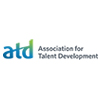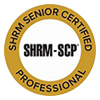
INSURANCE INDUSTRY
CHALLENGE
Underwriter Turnover
The personal lines operations group of a leading national insurance provider struggled with retention of underwriters. It was taking approximately nine months for an underwriter to become fully trained and productive in the role. The business challenge was that by the time the underwriters were fully trained, they either transitioned out of the personal lines operations group, were promoted to different roles or left the company. There was a significant loss of investment in the underwriter roles which are critical to overall insurance operations continuity and success.
The Personal Lines Operations Executive and Learning and Development Manager wanted to identify a better approach to onboarding underwriters that would reduce overall training time and decrease the time to proficiency. They also wanted to shadow the consultant to ensure the Learning and Development team understood the process used to develop the Learning Strategy and conduct the Job Mapping sessions on their own and implement the plan internally.

APPROACH
Strategic Consulting
MLGS was retained to provide consultative support on how to resolve the issue of Underwriter turnover within the operations center. Over a two month period, a detailed analysis was conducted to identify needs, performance drivers, hindering factors and gaps to achieve the business goals. Interviews were conducted with key stakeholders, instructors, operational leaders and underwriters; training content and performance support materials, job tools and systems were reviewed; side-by-sides were conducted with high, medium and low underwriter performers; workforce management reports were analyzed relative to performance trends, and job profiles, performance expectations, incentives and other human resource data was reviewed.
As part of our consultative approach to analysis, a 2.5 day job mapping session was conducted with top performing underwriters from each operations center location to identify the key areas of focus for underwriter training. This activity helped to identify discrepancies in job practices and procedures and the 20% of the underwriter job responsibilities that are done 80% of the time, thereby making training more efficient, and underwriters more proficient out of training.
SOLUTION
Learning Strategy and Transition Roadmap
Due to the MLGS process for analysis and job mapping activities, five (5) key focus areas and 17 solution recommendations were identified that addressed not only the Underwriter on boarding needs, but operational efficiency recommendations to provide a better support model for underwriters post training.
The tailored job mapping session helped reframe the nine-month training program into a seven week performance-based blended learning curriculum that would include self-paced content, virtual instructor-led sessions across all center locations, and center-led master sessions with tenured underwriters and other instructor led sessions.
The three-month post training support model recommendation was designed to provide systematic post training support, feedback and coaching that Underwriters needed to continue to develop in the role and build confidence in their capability.
A roadmap for implementing and transitioning the operations was designed to help the Operations team understand how best to stage and prioritize the work.
RESULTS
The Operations team was able to take the consultative outputs, learning strategy and transition roadmap and move the work forward with their internal work streams. MLGS was able to help the insurance team understand the operational challenges to success, the gaps they needed to close and the vision for the future of the Operations Group and the underwriter role.




